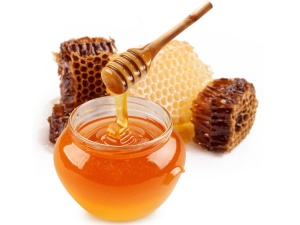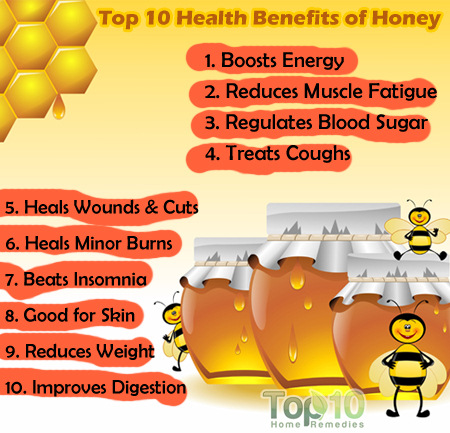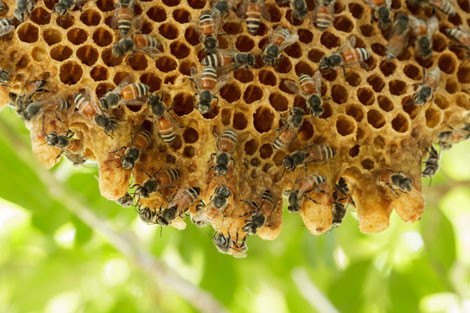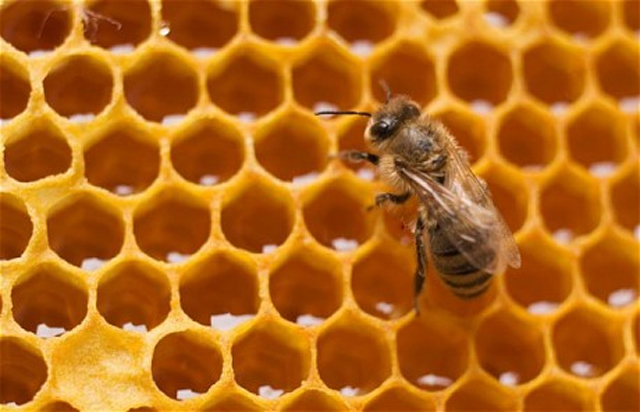Often times, when we think of bees, we don’t think religion and we don’t think character arcs. We don’t think about the ways that bees symbolize different ideas and how that reflects the ideas that are present in a possible post-apocalyptic future. But lucky for us, Margaret Atwood, in her book, The Year of the Flood, has got us covered.
Atwood, in relation to the character of Toby, puts strong emphasis on the symbolic relationship between Toby and the bees in her role as Eve Six. In that role, Atwood also uses Toby to introduce the idea of honey and what it means to the gardeners, to Toby, and to Atwood’s themes are large. Because, in a very real way, honey marked the beginning of the end for Toby, the Gardeners and the rest of the world.

Honey is often seen as the best natural remedy due to its antibacterial properties. It can be used to treat burns, infections, ulcers and gastroenteritis. It also never “goes bad” due to its low ph, its high viscosity (thickness), its high osmolarity (concentration of solution per number of solute particles per liter) with low availability to water (meaning that mold has no opportunity to grow) and its ability to produce hydrogen peroxide. Honey has many natural benefits which lend it to be the long lasting natural remedy that can be applied to a great many positive uses. There is a discrepancy with this image and the way in which honey is significantly introduced in the novel, namely, in the first viewing of Crake a.k.a. Glenn.

Crake first appears with a jar of honey, claiming that something is wrong with it and he is here to see Pilar about it (Atwood 145). One of the only ways to spoil honey is to dilute it, allowing for mold to grow on it, thus rendering it inedible, and that fact that this is how Atwood chooses to introduce us to Crake is telling. Crake will be the one to bring about the Waterless Flood with his BlyssPluss pill which was developed as part of his immortality project at Paradice and Atwood is choosing to introduce him already in possession of a tainted immortality. Honey is often perceived as a symbol of immortality, as it is able to withstand the trials of time with minimal damage and still be good, but Atwood is showing that Crake has managed to taint this natural immortality, and, as a result, is coming to Pilar to fix it.
This is an odd moment, of Science coming to Faith for answers; of Science coming to the natural world to ask questions. The interesting thing about the encounter though, is how Crake dismisses it in the end. He claims that Pilar’s illness merely a “design fault” and as something that “can be corrected” (Atwood 147), thus dismissing the severity or even the natural rights of death by claiming that it is a mistake that he can fix. Crake is stripping the honey and the natural world if it’s healing properties, and, in away is stripping faith of it’s validity simply by being in possession of the tainted honey and introducing it into the world of the Gardeners.

The honey is the product of the bees, a community of hard working insects who are working for the good of everyone around them. The Gardeners are the embodiment of that idea and the “honey” that they produce is their ideals and their values in how to treat others. Crake is a “friend” of the Gardeners and works for them as an ear inside the world of the Compounds, but in the end, what he does is like the tainted honey. He works against the community of the Gardeners, the hive, and even takes half of them with him to work as part of MaddAdam in Paradice. He taints the honey that the Gardeners have given him, just like he symbolically taints their ideas. Crake is like the bee that betrays the hive, and in the end it destroys them.
The bees are a reflection of the community of Gardeners, just as the honey is symbolic of what the Gardeners give to the world, something pure and lasting that ends up being taken and corrupted by Crake. The symbol of honey and bees both factor into the religious overtones that Atwood has laced her story with, as well as lending themselves to the more subtle, symbolic aspects of what is happening versus the significance of the details of what is happening, all of which culminate to describe Toby’s arc. The bees represent Toby’s time of peace with her community. Crake’s appearance with the tainted honey and Pilar’s death mark the end of that security and that peace. Toby enters a new stage in her life where she must tend the bees alone and she draws near to them, considering them her close friends, but she ends up leaving and losing that community as well. Then Crake and his flood come, stripping Toby of everything she valued, her community and everything in her life that was meaningful and long-lasting, her “golden honey”. Toby’s character is marked by the bees, and in a sense, Toby, after the Flood, lives in a liminal state, just as the bees do, “between the living and the dead” (Atwood 180). In a way, Toby, as the last bee of the hive, the last remnant of community, becomes the tainted honey. She still holds to the practices of the Gardeners and she maintains their values, but, in losing her hive, she has lost the thing that makes life living, and has entered the place between life and death. Toby is like the last bee of the hive, alone and all too mortal, the stark contrast between what she once had and what honey was always supposed to mean.

And in a very Atwood move, linking Toby to the idea of the bees and the Gardeners as her hive and collection, and then factoring in the Waterless Flood, is also an ingenious way of pointing to the declining bee population and how losing them would mean the destruction of the whole world, which finds it’s parallel in the Flood, Crake’s attempt at immortality.
So far, Atwood’s predictions of what could happen in the suture have been pretty spot on, and it leaves me wondering, is she right about this too? Will we be robbed of our ideals, our portal to immortality? Will we allow ourselves to be tainted by the prospect of bodily immortality and become like Crake and his honey? Will we be like the last bee? Or will we hold on to our honey, and what makes us bees, even if the rest of our hive is gone?
Works Cited
Atwood, Margaret. The Year of the Flood.Vintage Canada, 2010. Print.
Scott. “Honey Can Be Used for a Variety of Medicinal Purposes”. Today I Found Out: Feed Your Brain. March 9,2017. Web.
Hiskey, David. “Can Honey Go Bad or Make You Sick?”. Today I Found Out: Feed Your Brain. March 9,2017. Web.
“Why All The Bees Are Dying”. Youtube, Uploaded by Seeker. May 13, 2013. https://www.youtube.com/watch?v=BRGrI4AQG70
“Honey: Magical, Immortal Superfood.” Youtube, uploaded by Seeker, August 26, 2013. https://www.youtube.com/watch?v=sM2y5Bu9Euk

March 10, 2017 at 9:21 am
I enjoyed reading your post, you developed good ideas, which in my case were thought provoking. I agree that Toby does have a very complicated and interesting relationship with bees in the MaddaDamm trilogy. I would like to add to the discussion by saying that we need a healthy population of bees much more than bees will ever need a healthy population of human beings. Bees facilitate the reproduction process of plants, which in return is responsible for the vast majority of vegetables, seeds and fruits the world produces. They are an amazing!
LikeLike
March 11, 2017 at 1:14 pm
That’s a very thorough and interesting analysis of Crake! I actually never considered him to be an enemy to the Gardeners. In fact, I thought he was helping them because he is acting as the window that lets the God’s Gardeners see what is happening in the Compounds. I don’t think that the honey was actually bad, I think that it was just an excuse to give Pilar’s health analysis. The way I see it, since honey keeps any source of bacteria or mold out, Crake is protecting the information that he put inside that jar of honey, and thus, protecting the Gardeners from decaying. We do learn later in the books that many of the Gardeners survived the flood that was mainly caused by Crake. I guess the interpretation is a matter of whether Crake is the bad guy or a good one.
LikeLike
March 20, 2017 at 8:14 pm
I think this blog post is amazing! I didn’t realize that the bees were such a big symbol in the story and this blog post provided very insightful ideas. I never viewed Crake’s entrance to the story as representing ‘the end’ of humanity but now that I read this I realize that it makes sense. Also, I now see that the bees symbolizes the Gardeners. Toby’s life seems to be the most peaceful when she is with the bees, even though she’s not sure that talking to them actually makes a difference. The bees represent well the Gardeners. They have this sense of community and belonging that seems to be absent in the rest of the story. Even though I might not agree with all their views, I do admire their simplistic and ‘pure’ lifestyle, which is clearly the opposite of life in the compounds. I really enjoyed reading your blog post!
LikeLike